Capcom and SNK have always been the titans of fighting
games, with fans in their respective camps pounding on each other dressed in Terry Bogard's hat and Ken Masters' gi, but there’s another company with its own fighting game camps that has essentially been doing its own thing over the years.
Arc System Works is a developer specializing in fast,
hand-drawn 2D fighting games with large character sprites and detailed
animations often mixed with deep, sometimes 3D backgrounds for a unique visual
effect that makes both stand out. They've made many critically praised fighting games this way, some of
which are based on action-packed licenses like Sengoku Basara, Fist of the
North Star, and Persona 4.
 |
| Based on a totally true story. |
Their best and most prominent games come from the franchises
they made themselves: Guilty Gear and Blazblue.
Though the two are roughly equal in popularity (since it seems both
their camps have the same members), the former is the company’s claim to fame
and currently its longest-running franchise. I’ll
go over Blazblue in the next article, but for now I feel it’s necessary to go
over the franchise that set the stage for it and is still beloved today.
Believe it or not, Arc System Works was founded by several
former SNK developers with a few Capcom devs mixed in as well. SNK’s influence shows itself through ASW's love of
2D artwork and a few similar characters, but unlike SNK’s audience-targeting
designs, Guilty Gear is primarily designed around one man: Daisuke
Ishiwatari. Daisuke is the artist,
programmer (for the most part), musician (for the most part) and writer for
Guilty Gear, as well as the voice of the main character. Everything that Daisuke likes is in the games, making it one of the most indulgent game franchises I have ever seen, not that
that’s a bad thing. The gamers in camp Guilty
Keep in mind that because these are articles about fighting
games, I will not be detailing the game Guilty Gear 2: Overture, the
3D action game that takes place after the fighting game installments. I will also not be covering Guilty Gear Xrd
because I am limiting myself to only covering games in each franchise
that have been out for at least a full year, mostly for spoiler reasons. That also means that I will not be detailing Blazblue: Chronophantasma when the time comes.
Story
Guilty Gear takes place several years into the cyberpunk-like
future, specifically 2180 in the first game.
Years before, in 2010, mankind discovered a new, special energy source
they called magic (because that’s the scientific term) and established more
powerful civilizations based around its use.
I must’ve missed that headline back in 2010.
The new technology proved to be humanity’s undoing when one
of the countries developed artificial organic weapons made from magic called
gears.
What precisely a gear is is rather vague, but from what I
understand, they’re creatures that are much more in tune with magic than
ordinary humans. Their appearance can be
anything from humanoid to giant teethed monstrosities, but the main ones in the
series are the former, though some use a special limiter that gives them human
form.
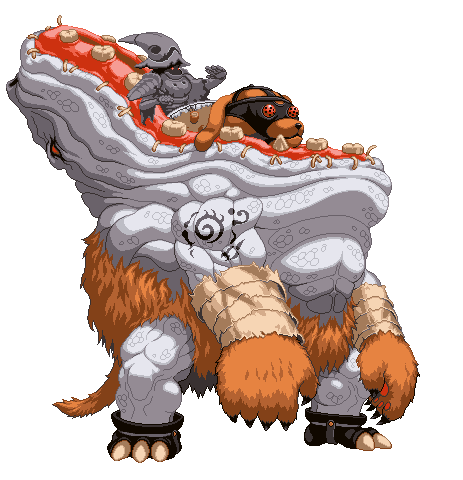 |
| When they aren't human-types. |
After the gear leader, the first complete gear, Justice,
turned on humanity, a century-long war commenced that destroyed much of the
world, including Japan , where nearly the entire population was wiped out.
The gears were ultimately defeated and Justice was sealed in an
extradimensional prison thanks to a gear-fighting organization called The
Sacred Order of Holy Knights, which disbanded when it was all over.
The first Guilty Gear takes place a few years after the war,
when a gear named Testament attempts to bring back Justice. Because of his power, and because they're still recovering from a huge war (or perhaps because Testament tricked them),
the Union of Nations holds a fighting tournament to find the strongest person
to fight Testament and stop him.
After the first game, the series drops the tournament structure
and becomes largely about the interaction between the characters, of which
there is quite a lot.
Heroes
Guilty Gear’s main hero (or at least one of the two primary heroes) is Sol Badguy, a badass, sword-wielding, fire-shooting gear-killing
bounty hunter with a mysterious past slowly brought to light over the course of
the games.
From what we know so far, Sol’s real first name is
Frederick, and he along with two other people helped create the gears. He was made into the first (and possibly only) prototype gear. When the gears rebelled, he joined the Holy
Knights for a time, but left and took a special weapon called the Fireseal sword with him. Now that he’s a vigilante (like many of Guilty
Gear’s characters), Sol is wanted by the authorities.
You can see the previously-mentioned indulgence from Sol
alone. First, he’s an avatar of Daisuke,
even having the guy’s voice. Second, Sol
is practically made entirely of Daisuke’s favorite character traits: frizzled
hair, a revealing punk outfit, belts (the number of belts Guilty Gear
characters wear is ridiculous), a badass, unfazed demeanor, and a headband that
has the words “rock you” etched on it, referencing Queen, one of his favorite
bands. Sol is how Daisuke Ishiwatori
sees himself, to the point that, reportedly, some of his friends jokingly replace his last
name with “Badguy” when talking with or about him.
But just because he’s made specifically to make the designer
look cool doesn’t mean he’s a flat character.
He’s a little clichéd in my opinion, but he has some depth. Sol fights gears because he’s responsible for
them, and his relationship with his enemy and ally Ky Kiske is a somewhat
complicated one.
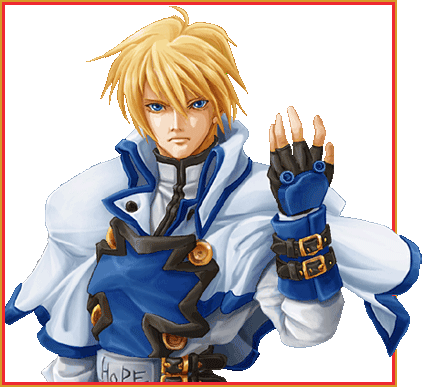 |
| Someone tell me what the purpose of wearing belts on your sleeves is! |
Ky was the most prominent member of the Holy Knights, having
become leader when he was only 16. After
the knights were disbanded, Ky became a member of the International Police
Force, where he upholds the law and investigates phenomena that occurs,
discovering the main villains and forming a rivalry with Sol in the process.
Ky is essentially on the lawful good alignment. He can be understanding of some characters
bending the law (he works with them on a few occasions), but outright monsters or the main villain feel the wrath of his
lightning-based weapon: the Fuuraiken. Think
of him kind of like the Harvey Bullock to Sol’s Batman (only much much better-looking).
Ky’s such a prestigious law enforcer that the main villains
made a robotic copy of him (more on that later).
 |
| He is also very much a civilized gentleman. |
The third focus of the story is Dizzy, a girl
who is half-human and half-Gear, giving her the general appearance and
mannerisms of a human, but also giving her sentient wings, a tail, and a much
faster aging process (she's technically 3). This is likely
because she is the daughter of Justice, who was a human made into a gear.
Because she’s a gear, Dizzy was forced to live in isolation
from the general public, where she was protected by Testament, who had a new
resolve after Justice was destroyed.
Unfortunately, someone found out about her and a gigantic bounty was
placed on her head, leading to the events of Guilty Gear X, where Sol made his
way to her, but spared her life, since she’s the most innocent character in the
franchise by far.
Later, Testament allowed the side character Johnny and his
Jellyfish Pirates to look after her, where she gets along very well with
everyone.
 |
| What is the purpose of wearing belts on your wrists? |
Dizzy’s two sentient, morphic wings act as her weapons:
Necro, the dark and violent one that uses brutality, and Undine, the light and
gentle one that uses ice. Both care for
Dizzy’s well being, but have different methods of protecting her (they briefly
argue with each other in one of her taunts).
With these three heroes, Guilty Gear has every variation of
good on the alignment spectrum: Chaotic good (Sol), neutral good (Dizzy) and
lawful good (Ky). I don’t know if that
was the intention when they were designed, but having the three variations of
heroes allows for more dynamic (and just plain entertaining) conflicts. Speaking of conflicts…
Villains
In the first Guilty Gear, the villain is the
previously-mentioned commander gear Justice.
Like Sol, she was one of the creators of the gears before she was turned
into the first successful human-like gear against her will, after which she
revolted and led the gears into the massive war.
They apparently made her a self-aware gear on
purpose with no contingency plan for if she rebelled, which is kind of a massive oversight. She had an army of bio-beasts at her command,
and they didn’t have any failsafes.
I thought Bush was out of office by then.
Every gear has no choice but to do what Justice says, all
except for the prototype gear, Sol, who ultimately kills her at the end of the
first game after she’s brought back by her loyal follower Testament.
 |
| What is the purpose of the belts on his shoulders? |
Testament (not to be confused with the thrash metal band) is
similar to Sagat in that he changes his ways after his boss is defeated. Like Sol, he was originally with the Holy
Knights, but was changed into a gear.
Unlike Sol though, Testament did so willingly, and since he was not a
prototype gear, Testament answered to Justice.
Even after Justice was sealed away, Testament still remained
loyal to her, and in the first game, tried to sacrifice the warriors in the
tournament as a part of a ritual to bring her back, but ended up sacrificing himself instead.
Later, Testament was brought back to life by the young new
commander gear Dizzy, whom he decided to dedicate his life to protecting up
until she decided to join the Jellyfish Pirates. After that, Testament simply became a
protector of the magical forest he and Dizzy lived in. Thankfully he’s not entirely alone there. A blue spirit of some sort that takes the
form of a crow follows him around in battle. It’s
never explained what exactly it is, so I assume it’s just one of his spiritual
forest friends.
 |
| Must get pretty boring. |
I suppose it’s unfair to classify Testament as a villain,
since his morality is not so black and white, but since he was an antagonist in
the first game, I think it counts.
Testament is a very likable character; noble to a fault,
but understanding.
He has a unique method of fighting as well. He’s great at twirling his scythe (made from
his own blood after the first game) and uses grim reaper-like attacks, but Testament
can also trip up his opponent with trap moves: one a tree that comes out of the
ground and the other a bloody web that is placed in midair. Testament’s opponent can see when he puts the
trap, but they have to memorize the location because they’re invisible once
they’re placed, and sprung when the enemy or one of their attacks touch them.
After the first game, the main villains have been the
Post-War Administration Bureau, a secret organization created to recover from
the war with the gears. Their exact
intentions and plans are unknown, but since said plans involve terrorizing
others, they quite clearly shouldn't be left alone.
They seem to be involved in making weapons for some nefarious purpose, since
they created robotic doubles of both Ky and Justice (the latter likely being a
plot excuse to use Justice as a combatant after she died) and gears as a whole, which were essentially made to be living weapons.
The PWAB is led by someone only ever referred to as “That
Man.” Even Sol only ever refers to him
by that name, which is odd, because he, That Man and the woman who would later
become Justice all helped make the gears, so you would think Sol/Frederick
would know his name.
Unless “That Man” is actually his real name and Mr. &
Mrs. Man were evil enough to name their kid “That.”
 |
| So are we dealing with the nazguls, dementors, or Organization 13? |
That Man has yet to engage in combat himself (except in
Guilty Gear 2, which I’m not covering).
He never shows his face and operates in the shadows, often sending subordinates
to do the dirty work and occasionally engaging in conversation with some of the
characters.
One of said subordinates is a strange gear named
Raven, who also has yet to fight in the series proper. He seems to be something of a rival to side character Axl Low, a British street fighter from the 20th
century who was forcibly sent through time into Guilty Gear’s future. Apparently Raven is some sort of alternate
version of Axl. Whether that means he’s
some kind of Axl from an alternate future or a nega-Axl from an alternate
dimension has yet to be made clear.
That Man has his own mad scientist as well, named Crow. Crow made the robotic Kys and a robotic
reconstruction of Justice. Like Raven,
he has yet to be playable, instead sending his creations to do the fighting.
The only person working for the PWAB who actually fights is the guitar-playing woman known only as I-no.
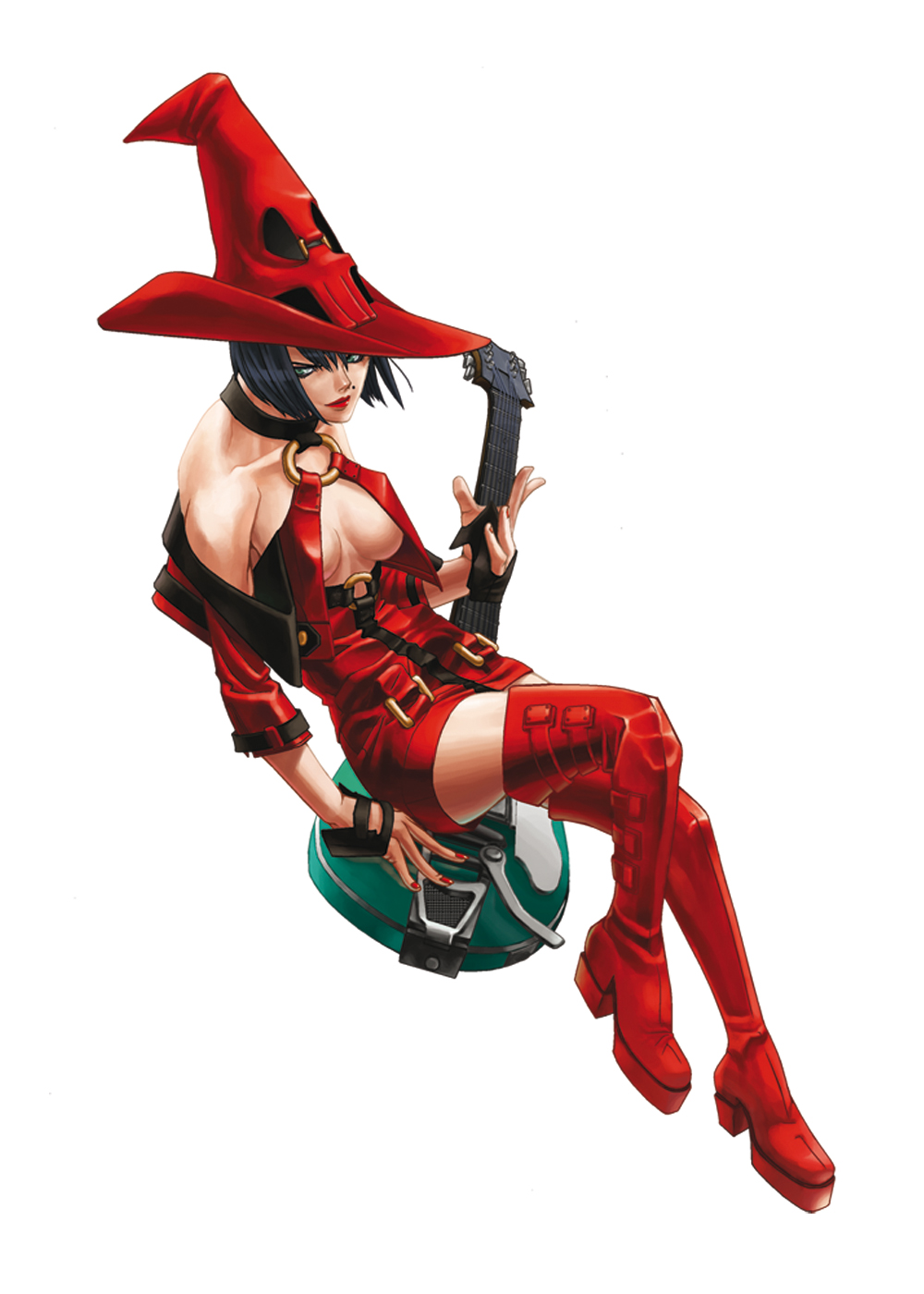 |
| Why does her hat need a belt? And why does it talk? |
All you can really say about I-No’s motives is that she
works for That Man and loves terrorizing others. In fact, how loyal she even is can be called into
question, considering there are times where That Man has had to stop her. All she seems to ever do is deride the other
characters, and at one point, transport Sol into the past to make him fight his
past self, because she can somehow travel through both space and time (the latter
takes more power though). I guess either she or the writer don't about the time paradoxes that could cause.
I-No’s impossibly cool weapon is her rocking guitar, which
can send out powerful shockwaves that come in different shapes and sizes. Some are simply projectiles, another is a
piercing aerial strike in the shape of a Halo energy sword, one of her super
attacks is a powerful explosive shock, and in Guilty Gear XX: Accent Core, she
has screen-filling onslaught attack called Megalomania.
I-No is the most prominent villain in Guilty Gear and
arguably one of its most popular characters rivaled only by Sol himself. Sure she’s an evil bitch, but she likes
having fun, and isn’t that a big part of what Guilty Gear is all about?
The Assassin’s Guild
Before I get to the other guys, I think I should detail a very
prominent subplot that runs parallel to Guilty Gear’s main story and involves a
good chunk of the side cast.
In the Guilty Gear universe, the Assassin’s Guild is a shady
organization that has existed for hundreds of years. It was originally founded by the gentlemanly
immortal British nightwalker, Slayer (not to be confused with the band of the
same name).
 |
| His wife Sharon is immortal, so he never runs out of blood. |
What nightwalkers are isn’t specified, but they seem to be
essentially vampires with dark powers and a name similar to “Darkstalkers,”
which is probably a fun little tribute to the franchise, as some of Arc System
Work’s developers used to work on the Darkstalkers games.
After a while, Slayer retired, and his place was eventually
succeeded by an assassin named Zato-1.
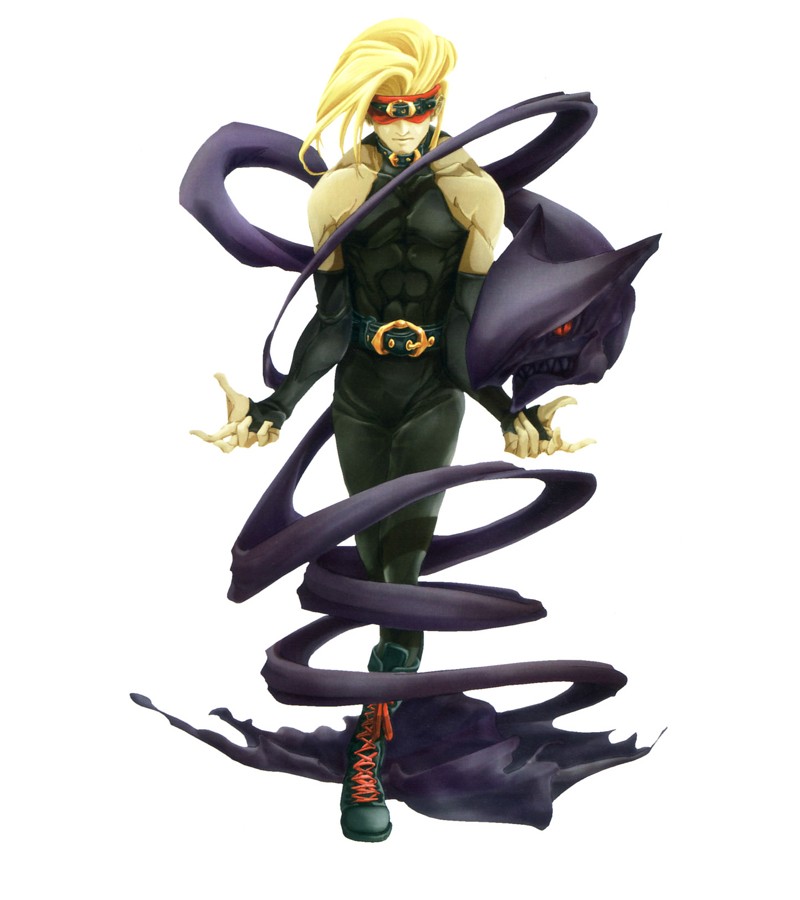 |
| I know he's blind, but does he really have to keep his blindfold on with a belt? |
Zato-1 rose to prominence in the guild thanks to the power
he got from a magical creature called a forbidden beast, named Eddie (not to be
confused with Eddie Van Halen), who gave Zato the ability to use his shadow as
a weapon at the cost of his eyesight.
Like most demonic entities you make pacts with, Eddie
corrupted Zato’s mind, leading Zato to be killed by his fellow assassin Millia
Rage (who has her own forbidden beast she uses to control her hair), after
which Eddie completely took over Zato’s dead body. Now, because Zato’s body is deteriorating,
Eddie is looking for a new body to possess, which commonly leads to him
attacking other characters in the same vein as Akuma.
The whole guild is falling apart at this point.
One of the other assassins, Venom, hates Millia for killing (or rather,
attempting to kill, in his denial) the master he was loyal to, and Slayer came
back to forcibly disband the guild because he doesn’t like the direction it’s
taken.
 |
| Slayer is kind of a badass... More than other characters, I mean. |
Venom has very questionable equipment, not just in his
really stupid belt-laden outfit and that he somehow painted his insignia on his
bangs. The strangest thing about Venom
is his weapon. There is a character that
uses a key, another uses an anchor and another with folding fans, but none of
them are as strange as Venom’s weapon: a billiard cue.
I will never get over that.
A serious, near-faceless, badass assassin takes people out using
billiard balls and a cue. That is both
hilarious and awesome at the same time, especially since it works! Venom is able to place floating pool balls in
the air (up to 4, I believe), which he can hit with his cue to have them
ricochet around the stage and hurt his opponent, possibly multiple times. He also turns his opponent into a white ball
as a grab and shoots even bigger balls for his super attacks.
All this time I’ve been playing regular pool when I should
be playing EXTREME pool!
 |
| Break shot. |
The Other Guys
While the heroes, villains, and Assassin’s Guild settle
their problems with each other (by talking them out, I'm sure), the other characters mind their own.
Among the side cast are Bridget, a boy raised as a girl by
nuns, Jam Kuradoberi, a Chinese kung-fu girl who opened her own restaurant after
claiming Dizzy’s bounty, and female samurai straight out of Ruroni Kenshin named Baiken, who along with two other characters is one of the few Japanese people
left in the world. During the war,
Baiken’s village was destroyed by gears and she lost an eye and arm (replacing
the arm with a chained claw). During
the attack she saw That Man, and has since sworn revenge. With such a personal connection to the main
villain, she may become a more important character later on.
The other Japanese characters are Anji-Mito (shown with
Baiken above) and May. The few Japanese people left in the world are of interest to the PWAB,
apparently because they’re able to use their own special kind of magic
(ki). Many, like May, don’t utilize it
though, so nobody shoots it out of their hands like an episode of Dragon Ball Z.
May is first mate of the Jellyfish pirates, a gang composed almost
entirely by young girls that travel on land and sea in their giant mechanical
ship. The captain of the fine flying
vessel is a sunglasses-wearing paragon of coolness named Johnny (and his last name isn't Cash).
The very concept raises a few questions. Isn’t only allowing young girls to be
on your crew sexist? What happens when
they grow up? Are there any kinds of
pedophilic implications?
Daisuke doesn’t care.
He liked the idea, and what he says goes. Or at least, what he or Norio Wakamoto says.
 |
| Man, look at the size of his belt. |
Other characters include the previously-mentioned time
traveler Axl Low, special government agent of destruction Potemkin, a homunculus
named A.B.A. (not to be confused with Swedish music group ABBA) with a giant
talking key, and Faust, the single craziest character in any fighting game
ever.
In the first Guilty Gear, Faust went by the name Dr.
Baldhead, a doctor who went crazy and started killing people after he believed he
accidentally killed someone (it later turned out to be a setup by the
Assassin’s Guild). After learning the truth, however,
he put a bag on his head and started going by the name of Faust to atone for
the people he killed by healing others (self-defense notwithstanding). Even when someone calls him Dr. Baldhead, he
tells them he isn’t that man anymore.
Outside of battle, Faust takes his job as a doctor seriously and is a very caring individual if you can ignore him being over 9
feet tall and wearing a bag on his head.
The way he flies to the scene of an incident on his magical umbrella
makes him like a more awesome Marry Poppins.
 |
| Does he really need belts for his shirt? What's wrong with buttons? |
But when he has to fight, Faust is nucking futs. He uses a gigantic, oversized scalpel as his
weapon of choice, somehow vanishes and then smacks his opponents by hitting
them with a door that comes literally out of nowhere, throws a
never-ending supply of exploding bags, and turns into a baseball player to hit
his opponents with a bat. That’s only
the tip of the iceberg.
His wacky moves and contortionist fighting style make Faust
essentially a combat Loony Toon, and it's what makes him such a stand-out in
Guilty Gear’s cast. Hell, he’s a
standout out of all the characters in fighting games as a whole.
Faust contributes to what is particularly impressive about Guilty Gear: it actually has
one of the smaller character rosters in fighting games, but it’s able to get
the absolute most out of it to make what it has as long-lasting as any other game. I suppose it helps that each one has an
unlockable second moveset in some games, but even without them the characters
are so radically different and have such unique fighting styles, Venom’s
billiards, for example) that it never gets stale.
One of the best examples of this is the character Zappa (not to be
confused with Frank Zappa), a young man whose body is constantly possessed by a
number of ghosts, although he doesn’t know that’s what it is and thinks there’s
something wrong with him biologically.
What makes him an interesting character is how these ghosts
help him fight. In battle, Zappa
randomly switches possession between these ghosts, and each of them enables a
certain set of special moves alongside a handful of consistent base moves.
He has a group of ghosts that act as projectiles, a powerful
lightning ghost, a dog ghost, a sword ghost, and his default ghost taken
straight from The Ring.
Of course, Zappa doesn’t like being possessed, which is why
his story is all about looking for Faust to help him (even though he’s
technically not that kind of doctor).
The special battle introduction between him and Faust is pretty humorous,
in my opinion. There’s a lot of comedy
that goes on with the side characters in Guilty Gear.
When it comes down to it, the Guilty Gear characters are the embodiment of Daisuke’s
twisted pleasures and bizarre concepts. If he likes it, he throws it in: belts,
skin-tight outfits, being Japanese, little girls with giant weapons, fancy accessories and…
Music
You may have noticed a recurring trend in character
names. That trend carries over into many
of Guilty Gear’s attack names, like “Break the Law,” “Master of
Puppets,” “Napalm Death” and Ride the Lightning.” As I stated, the game is just crammed with
whatever Daisuke likes, and when you have such a man compose almost all of the
franchise’s music, the thesis that Guilty Gear is really "metal" is reinforced.
Jammin’.
Gameplay
Guilty Gear has a similar basic control structure to The King
of Fighters, but a very different feel and flow.
Instead of having two punch and kick buttons, Guilty Gear
has one punch, one kick, one slash, one heavy slash, and one dust attack
button. The punch and kick buttons are
used similarly to the weak punch and kick buttons in KOF and Street Fighter:
they’re for racking up combos and striking your opponent when they're close. Also like the fighting game big boys, quarter
circle and half circles are used with button presses for special and super
special attacks. Sometimes super special
attacks in Guilty Gear are done with the same quarter and half-circle movements
as the other two, but another common command for a super special attack in
Guilty Gear is half circle back and then straight forward. For me, that took some getting used to.
The slash attacks bring each character’s weapon into play (aside from a few unarmed combatants, like Slayer). A normal slash attack has better reach and does more damage, but
isn’t quite as fast as a punch or a kick, so if your opponent is up in your
grill, you generally want to keep them away with a flurry of punches and kicks
before following up with a slash or two.
The heavy slashes are very much the same: they take a moment to use, but
generally have good range and do strong damage.
The dust attack is a different story. No, it doesn’t kick dust in your opponent’s
face like Ryuji Yamazaki. The dust
attack takes the longest to use and requires good timing. When it connects, it launches your opponent helplessly into the air. If you hold up on the
control stick as they go up, you can follow them up there and deliver a
badass air combo.
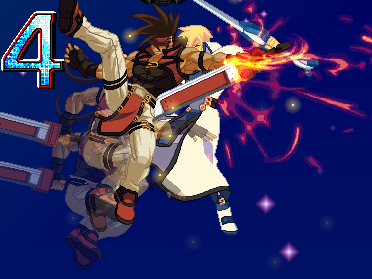 |
| Dust attack air combos make the screen turn blue for some reason. |
The dust attacks demonstrates a big part of what sets Guilty Gear apart from other fighting games: the
fighting is much more free form. Powerful
attacks send players flying around the stage even more than in The King of
Fighters, combos are racked up with quick attacks that are easy to use in
succession, and just about every character can double jump, high jump, and air
dash around the stage. It has the feel of a multiplayer
brawler like Super Smash Brothers. In
fact, one of the spin-off games, Guilty Gear Isuka, was essentially that. It played much like the other Guilty Gear
games, but allowed for up to four fighters onscreen at once (it was annoying that there had to
be a separate command to change which way you were facing though).
The DS spin-off, Guilty Gear: Dust Strikers took things even
further by adding platforms for players to jump around on.
The special attack gauge in Guilty Gear, called the tension
gauge, is done differently from its peers as well. It’s charged in essentially the same way, though it’s also charged by simply running, but has a much wider variety of
uses. Depending on how full your tension gauge is, you can use a percentage of it for various actions (the
diversity of which depends on the game and control style).
For example, you can often use a super special attack
(“overdrive”) by using 50% of your meter and 25% can be used for certain
special moves that are stronger than a heavy slash attack and use the dust attack button. A common usage of tension is “fortress
defense.” By holding the control stick
back and pressing any two buttons (other than the dust button) at the same time,
you create a barrier that completely negates damage instead of reducing it, but it uses tension regardless of whether it's hit or not, making timing very much key.
Playing offensively is also key. Some Guilty Gear games take away your tension
if you rely on tactics that are too defensive, like avoiding combat as a
whole or guarding the entire time. That’s the game’s way of saying “fight
or GTFO!”
My favorite use of the tension gauge, outside of super
special attacks, is the instant kills, which by name, may sound like
total game breakers, but in reality, they’re extremely impractical. Impractical, but awesome as hell.
In order to use an instant kill, you first have to enter
instant kill mode by pressing all 4 buttons other than the dust attack at the
same time. Once in instant kill mode,
your tension gauge decreases, and you have to use your instant kill attack
before it’s completely out and starts draining your health instead (or you can
press the 4 buttons again to back out).
The thing is, almost all the instant kill attacks only work at point blank range, they can be guarded against, and entering instant kill mode
is a dead giveaway to your opponent.
If the instant kill misses or is blocked, or if the tension
gauge runs out while in instant kill mode, you lose the tension gauge for the
rest of the round, meaning you’ll see it more often used as a humiliating
finisher or a last-ditch move, and even then, probably not in a serious fight.
If it does
connect…
It’s glorious. Each character has their own badass and/or insane instant kill move that “destroys” your
opponent. To name just a few of my
favorites: Slayer punches the enemy into the sky and recites a haiku, Faust
blows up an atom bomb under the enemy, Venom turns his enemy into a billiard
ball and pulls off the previously-pictured break shot, and Eddie makes some
kind of giant blue ghost head that then turns into a skull (possibly to be symbolic). Some are rather plain, just killing the
opponent with a strong attack, but for the most part, instant kills are inventive
and just plain fun to watch. As I said, Guilty
Gear is indulgent, and it’s fun to indulge in our fantasy of destroying people
with the power of rock, a giant blue flame dragon, and a punch to the moon.
 |
| That's nothing! When Ralf punches someone, they're deatomized! |
Bursts are actually used in a lot of fighting games,
including Tatsunoko vs. Capcom and other Arc System Works games like Persona 4
Arena, so anyone who has played such games should be quite familiar with them.
Personal Fighter of Choice: Robo-Ky
 |
| Robo-Ky is superior to the organic original. |
He has lazers
in his eyes, a spiked ball and shotgun in his wrists, missiles in his legs (and they’re longer than his legs are), a bazooka, and even a fancy chair
that folds out of his body and a table that folds out of his sword! Robo-Ky comes prepared!
All these
convenient appliances come with a price though.
Instead of a tension gauge, Robo-Ky has an electric gauge, which he can
charge by either using one of his grabbing special moves on his opponent or
standing on electrical panels he can place in front of himself by ducking and
pressing the dust attack button. This
makes charging the electric gauge a little trickier than a tension gauge, and a
lot of Robo-Ky’s attacks expend electricity in order to not work like crap. With some knockback strategy using basic attacks though, Robo-Ky can actually charge
his electric gauge even faster than a tension gauge.
Separately from
the electric gauge is his overheat gauge. When using some of his stronger, effective normal
attacks, the gauge's temperature indicator rises, requiring Robo-Ky to use one of his heavy slash
attacks to spit the exhaust out, and the closer to overheating he is, the more
the exhaust damages your opponent. If he
doesn’t cool down himself by venting the heat, he takes damage. That’s right, even Robo-Ky’s weakness is weaponized!
Using Robo-Ky
requires some fast and unconventional thinking (my favorite kind), but once you learn when it’s a
good time to place an electric panel or use his exhaust, he can be
incredible. He’s definitely my best and
favorite character to use.
That goes
beyond just being a heinous ass-kicker though.
Robo-Ky also has awesome theme music: his own rendition of Ky’s theme. Foolish humans call Robo-Ky’s music warbled and
loopy, but that is only because their defective minds cannot
comprehend its genius.
And his instant kill is by and large the greatest of
all.
 |
| All hail the mighty Robo-Ky! |
We both are also of the having people troubles.
 |
| ぼくは彼女を抱えていたことがない. |
Believe it or
not, at the end of Robo-Ky’s story mode in Guilty Gear XX: Accent Core Plus,
Crow tries to scrap him! Clearly that
man’s brain is defective! Robo-Ky is the
ultimate robot! He’s like the superman
of robots! He fights evil, makes
friends, and then flies off into the distance to fix someone else's life.
The Best of the Bunch
If you’re going
to get a Guilty Gear game for the best character selection and features, you
should get Guilty Gear XX: Accent Core Plus.
It has every single important Guilty Gear character up to that point (again,
excluding Guilty Gear 2), all the newest gameplay improvements, a story mode,
and more.
It should be
noted that Accent Core Plus’s story mode takes place after Guilty Gear XX’s
story mode, so that one may also be worth picking up for those who want to follow the plot. Guilty Gear X had a version with a story mode
too, but it was never released in America because we can’t have nice
things.
You can get
Accent Core Plus on any modern-day system, but the easiest way is to get it for
$15 on the Xbox Live Arcade or Playstation Network.
If you’re
feeling cheap though, you can instead get Guilty Gear XX Accent Core without
the plus, which I was able to find on the Wii for an incredibly cheap $5. The original Accent Core omits two characters
(who are technically dead at that point in the story anyway) and a couple
of stages. Accent Core doesn’t have a
story mode either (instead it has an arcade mode with character-specific win
quotes), but the fun gameplay still makes it a great pick-up-and-play title. The Wii version also has Gamecube controller support, so
there’s no need to worry about awkward nunchuck controls.
Other Media
Like The King
of Fighters, Guilty Gear has had a lot of drama CDs and novels that were never
released in America .
What KOF hasn’t
had (to my knowledge) is live performances of its awesome music. I haven’t been to one of them personally, but
I imagine the live performances of Guilty Gear’s soundtracks are
probably the most badass rock concerts ever organized until they make one based
around KOF. The live performances, like
the games themselves, have gotten their own CDs, but unlike the drama CDs,
fluency in Japanese is not necessary to appreciate good music, so if you like it enough, you can import them.
Finally, there’s the obligatory manga, titled Guilty Gear
Xtra, which was never released in America either, but I don't think we're missing
much. Guilty Gear Xtra is basically a
side-story taking place between the first Guilty Gear and Guilty Gear X. It focuses around two young characters: Tyr,
a mysterious young warrior, and Mizuha, a young girl and one of the last
surviving Japanese. The story centers
around the two during a cataclysm in which gears and gear parts are falling
from the sky due to a giant gear airship in space falling apart, all while
dealing with a villainess from the PWAB named Geena. The
Guilty Gear cast from the games play a key role, but little about them is
really expanded upon, since the focus is on the two new characters. Fans may be interested, but it’s ultimately your
average spin-off manga. It does have some above-average artwork though.
With Guilty
Gear Xrd on the horizon, I hope that this article brought some gamers up to
speed with the franchise, even if that wasn’t my original intention. Personally, I’m not getting
Xrd until I see some Robo-Ky! In the
meantime, I’ll keep playing Accent Core and the other fighting games I have. Like Blazblue.

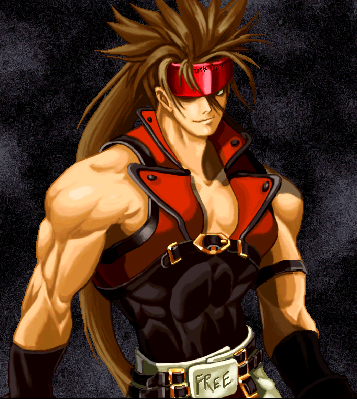

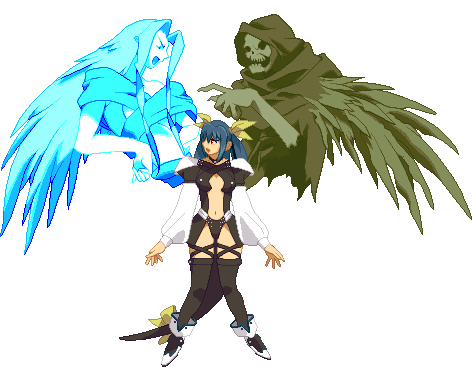


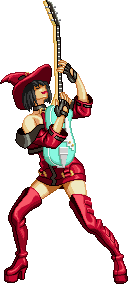



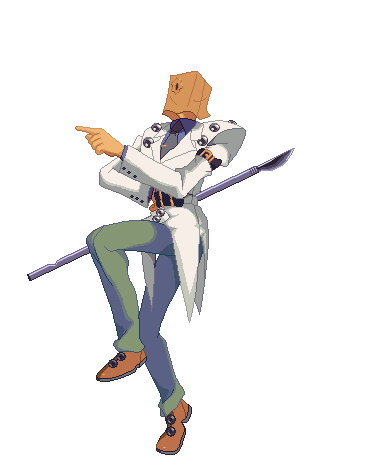
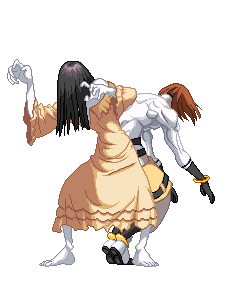



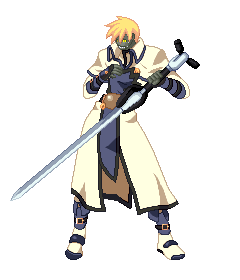
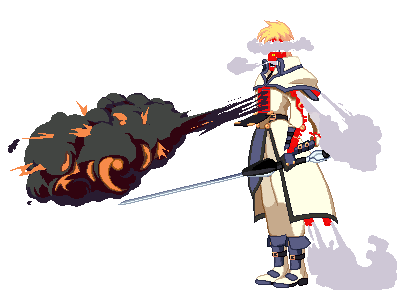

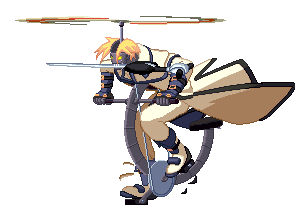
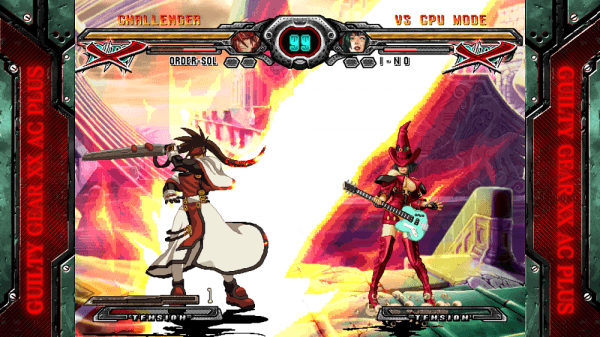


No comments:
Post a Comment